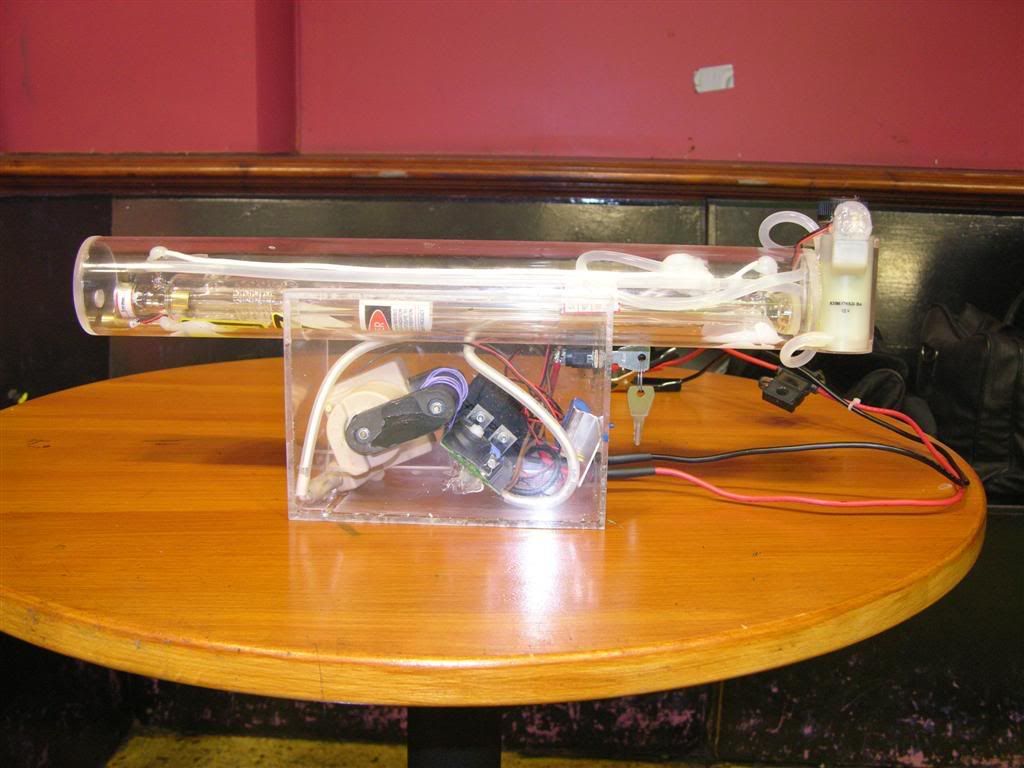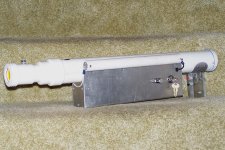Hello folks!
I've recently been considering constructing a portable CO2 laser.
I realized that when I built my 7W NUBM44 lightsaber, I dug myself into a bit of a hole - in order to make my next 'viral' video, I have to top that!
I essentially have two options:
(1) a diode array, which will be expensive and have a very spread-out beam,
(2) a portable CO2 laser, which will have short runtime but much more concentrated power.
I would much prefer a portable CO2 - it has not been done many times before, and I think it would be unique and impressive.
Anything in the range of 30-40W would be fine, and the duty cycle does not have to exceed 30 seconds.
Unfortunately, I don't quite know where to start. I haven't dealt with CO2 lasers before.
What kind of battery would be necessary to accomplish this? What kind of power supply? And how should the wiring be done?
I've recently been considering constructing a portable CO2 laser.
I realized that when I built my 7W NUBM44 lightsaber, I dug myself into a bit of a hole - in order to make my next 'viral' video, I have to top that!
I essentially have two options:
(1) a diode array, which will be expensive and have a very spread-out beam,
(2) a portable CO2 laser, which will have short runtime but much more concentrated power.
I would much prefer a portable CO2 - it has not been done many times before, and I think it would be unique and impressive.
Anything in the range of 30-40W would be fine, and the duty cycle does not have to exceed 30 seconds.
Unfortunately, I don't quite know where to start. I haven't dealt with CO2 lasers before.
What kind of battery would be necessary to accomplish this? What kind of power supply? And how should the wiring be done?








